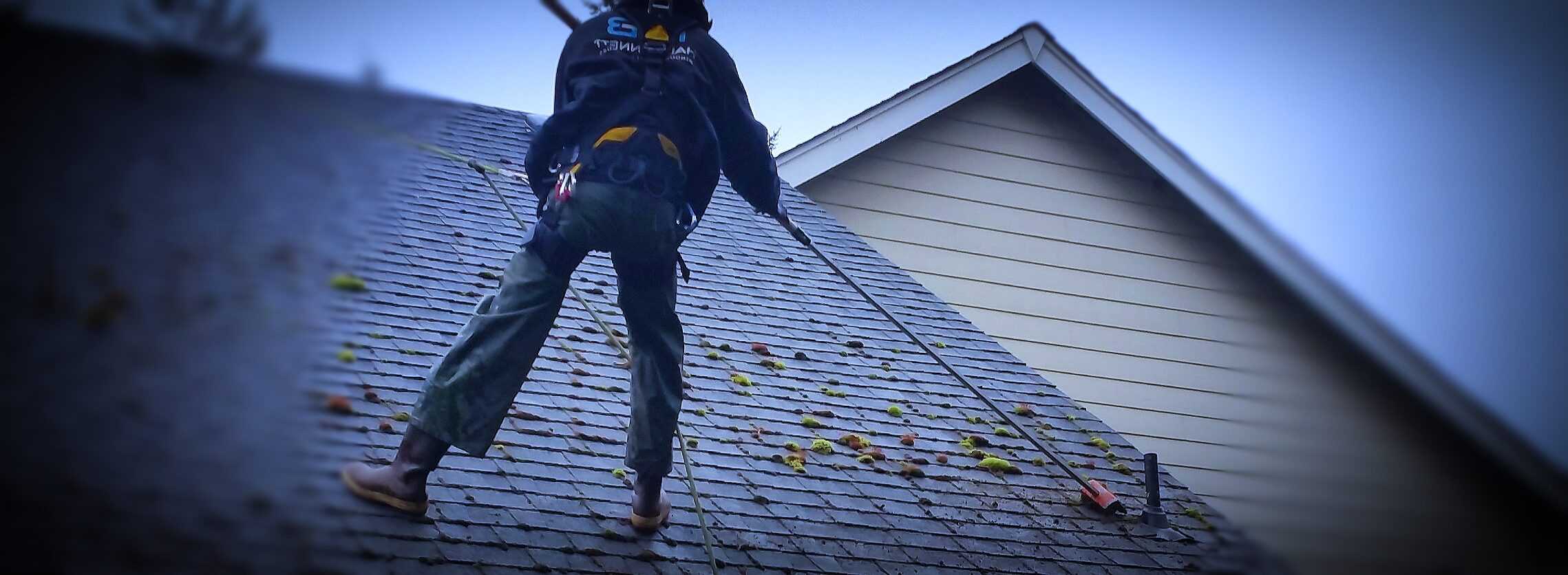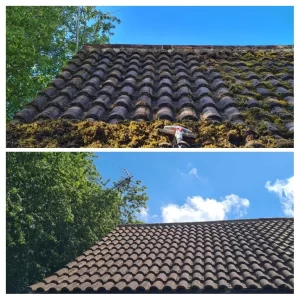Moss growth on a roof can cause significant damage if left untreated. While it may give a house a rustic, natural look, it can lead to moisture retention, roof degradation, and potential leaks. Removing moss is necessary to maintain the integrity of a roof, but it must be done safely. Climbing onto a roof presents risks, and using chemicals or pressure washing can cause unintended damage if not handled properly. Understanding the best safety practices can help prevent accidents and ensure effective moss removal.
Assessing the Roof Condition Before Starting
Before attempting to remove moss, it is important to evaluate the condition of the roof. Roofs that have extensive moss growth may already have weakened shingles or tiles, making them fragile and susceptible to damage. Checking for any existing cracks, loose shingles, or signs of structural weakness will help determine whether it is safe to proceed or if professional assistance is required. If the roof appears unstable, hiring a roofing professional is the safest option.
Weather conditions should also be considered before starting the process. A dry, sunny day is ideal for moss removal since wet or icy surfaces increase the risk of slipping. Working under strong winds or extreme heat should also be avoided, as these conditions can make the task more dangerous.
Using Proper Safety Equipment
Having the right safety gear is crucial for preventing accidents. A sturdy ladder with anti-slip feet should be used for access, and it should be positioned on level ground. If possible, having someone nearby to hold the ladder provides additional stability and security.
Wearing non-slip shoes with good traction helps maintain grip while moving on the roof. A safety harness attached to a secure anchor point can provide extra protection against falls. Gloves and protective eyewear should also be worn, especially when using chemicals or moss-killing solutions.

Choosing the Right Moss Removal Method
Several methods can be used to remove moss, but some are safer and more effective than others. Physically scraping off the moss with a brush or specialized roof broom is a common method, but it requires careful handling to avoid damaging the shingles. Applying too much force can lead to cracked or loosened shingles, creating further problems.
Using a moss-killing solution is another approach. There are both chemical and eco-friendly options available. If chemicals are used, safety precautions should be followed, including wearing protective gear and ensuring proper ventilation. Some commercial moss removers contain harsh ingredients that can be harmful to plants and pets, so runoff should be controlled to prevent environmental contamination.
Pressure washing may seem like an easy solution, but it is not recommended for most roofs. The high-pressure water can strip away protective layers of shingles, leading to leaks and premature roof deterioration. If pressure washing is necessary, it should be done at a low setting with caution to prevent damage.
Preventing Future Moss Growth
 Once the moss is removed, steps should be taken to prevent its return. Moss thrives in damp, shaded areas, so increasing sunlight exposure to the roof can help discourage growth. Trimming overhanging tree branches allows more sunlight to reach the surface, reducing the conditions that favor moss development.
Once the moss is removed, steps should be taken to prevent its return. Moss thrives in damp, shaded areas, so increasing sunlight exposure to the roof can help discourage growth. Trimming overhanging tree branches allows more sunlight to reach the surface, reducing the conditions that favor moss development.
Installing zinc or copper strips along the roof ridge is another effective preventive measure. When it rains, small amounts of these metals wash down the roof, creating an environment that inhibits moss growth. Regular roof maintenance, including cleaning debris from gutters and ensuring proper drainage, also helps keep moss from coming back.
Knowing When to Call a Professional
While many homeowners may attempt moss removal on their own, certain situations require professional help. If the roof has a steep pitch, extensive damage, or is difficult to access safely, hiring an experienced professional is the best course of action. Professional roof cleaners have the necessary equipment and expertise to remove moss safely without causing damage to the roof structure.
Additionally, if the moss problem is recurring despite previous removal efforts, a professional inspection may be necessary to identify underlying issues. Poor ventilation, inadequate drainage, or roof material defects can contribute to persistent moss growth. Addressing these issues early can help avoid costly repairs in the future.